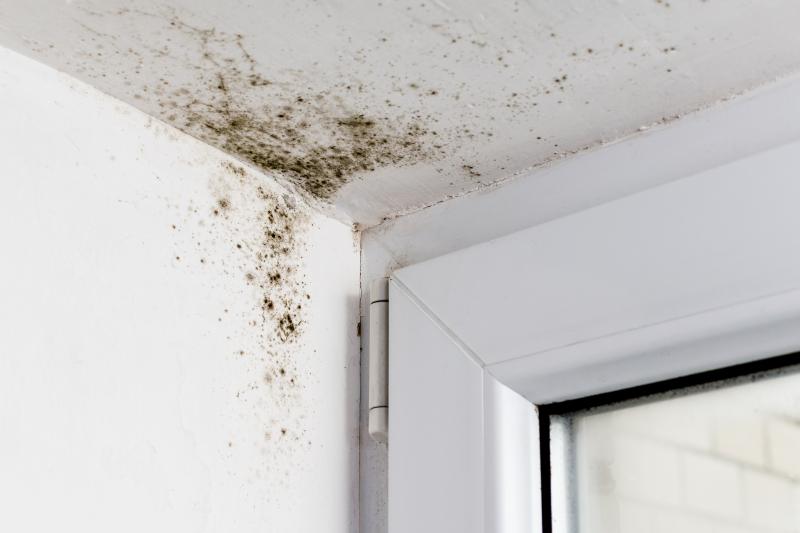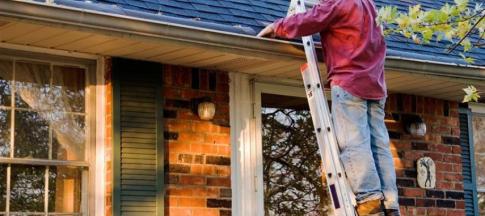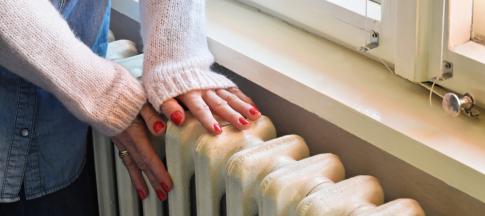
Whether you’re a landlord renting out your property, a homeowner or a tenant living in a rented house, mould is a real problem.
We’re here to help you understand how to avoid it, fix it and who’s responsible for it.
How to spot mould
There are a few signs that could mean you have mould in your house:
- a musty smell
- black or dark-coloured stains on your walls or other surfaces
- damp in your walls, furniture or carpets
- condensation
If you’re a homeowner, you can take some more serious steps to see if you have (or could have) mould in your home:
Get a professional to check your property’s structure to make sure the damp proofing is in good condition
Check the roof and guttering for any holes or cracks that could let water into your home
Read our guide on rising damp.
What causes mould?
Mould is usually caused by condensation and it’s more common in the winter.
Every household produces a lot of moisture through things like cooking and drying clothes.
When this moisture has nowhere to go and the space doesn't have proper ventilation, it can cause condensation.
This can then lead to mould growing on surfaces and walls.
The reason it’s usually worse in the winter is because we tend to not open our windows as often as we do in the warmer months. This means we don’t let fresh air circle around inside our house.
How to prevent mould
Ideally, you want to try and avoid having mould in your home, but we know it’s easier said than done!
There are a few things you can do to keep mould at bay:
- Make sure your house is ventilated properly – open windows and use extractor fans
- Consider using a dehumidifier – these reduce the moisture in the air and are especially useful in rooms that are more likely to get damp, like bathrooms
- Clean your house regularly – make sure you keep any areas that are likely to get damp clean, including wiping down sinks and showers
- If you can, dry clothes outside or use a dryer – hanging wet clothes up inside your home can contribute to mould
Will a dehumidifier stop mould?
The short answer is no - dehumidifiers won’t stop mould. But they’ll definitely help keep on top of it!
Dehumidifiers reduce the moisture in the air and mould spreading through water sources, so they do help to prevent mould and damp.
How to get rid of mould
It’s important to try get rid of mould as soon as possible. It can affect your health and cause issues with your breathing.
If you’re trying to get rid of mould yourself, make sure you have the right equipment to protect you. That includes, gloves, a mask and possibly some eye protection.
Keep windows and doors open so the house is ventilated too.
How to get rid of mould on walls
There are a few ways you can try to get rid of mould on your walls.
- Fill a bucket with water and some bleach (one part bleach to four parts water) and use a cloth to wipe this solution across the wall until the mould is gone. Then use a dry rag to dry the area.
- Mix equal parts vinegar and water in a spray bottle. Spray it on the area and then leave it for around an hour. Then use a damp cloth to wipe the solution away.
- You can also buy mould removal sprays in stores or online. But make sure you follow the instructions carefully.
How to get rid of mould on the ceiling
Follow the same steps as for fixing mould on your walls. But bear in mind – it can be a little trickier to do when it comes to your ceiling.
You should:
- make sure you have something very sturdy to stand on to reach – get someone to hold you steady if you need!
- wear some eye protection too – if you’re reaching up, it’ll be easier for the mixture to fall and possibly get in your eyes
How to get rid of mould around windows
It’s slightly harder for mould to form on glass, but that doesn’t mean it’s impossible! It can still come up between glass panes but usually you’ll see it on your window sealant.
If you do have mould on your windows, there are a few ways you can remove it.
Either use:
- a solution of one part white vinegar with one part water
- a mild bleach solution – around one part bleach to 10 parts water
- mould remover from a store
Whichever you go for, you’ll need to spray the solution onto the sealant and then leave for 10 to 15 minutes.
Once the time’s up, use a soft brush or a toothbrush to wipe it. Don’t use anything too hard, as it could damage the sealant.
If it’s too tough to remove, you might need to get the window resealed.
How to get rid of mould on soft furnishings
If you have any soft furnishings (curtains, clothes, cushions) that are mouldy, it’s important to clean them thoroughly.
Follow these steps:
- Fill a bucket with water and add a good dose of white vinegar.
- Leave your mouldy items to soak in this solution for at least an hour.
- Take them out and try to scrub off any mould left over with a cloth or brush.
- Then, wash them on a regular cycle.
- Ideally, dry your clothes or other soft furnishings outside in the fresh air!
How to get rid of mould in the bathroom
You’ll mostly find mould forming in the bathroom because of the condensation in the air.
To get rid of it, you can use the same vinegar or bleach solution as before, or lots of stores offer bathroom-specific mould removal sprays.
These are perfect for tiles, sealant, silicone and other bathroom surfaces.
Bathrooms sometimes have smaller windows, so make sure the room is well-ventilated before you get started.
If your bath towels or mat are mouldy, you can try following the steps above for soft furnishings. But if it doesn’t work, it’s best to replace them.
How to get rid of the smell of mould
Obviously, the first step is getting rid of the source of the smell. That means trying some of the tricks we’ve mentioned to get rid of the actual mould.
If the smell stays, there might be some mould somewhere you’re missing. Check under sinks, behind curtains or behind furniture to be safe.
If you’re confident you’ve dealt with all the mould, open windows and doors to ventilate the house properly.
It might also be worth doing a bit of a deep clean of the house! Wipe down surfaces, hoover, wash any clothes you think might smell a little, and so on.
Whose responsibility is it to deal with mould in a rented property?
Often, mould is caused by condensation because tenants aren’t using extractor fans, opening windows, or cleaning the house properly.
It’s their responsibility to make sure they start doing those things to help prevent mould.
But there are a few other structural reasons mould can appear:
- Water beneath the house rising through the building’s bricks and mortar, usually due to a problem with the property’s damp coursing (a layer of waterproof material within the walls, which is supposed to prevent damp from spreading).
- Leaking gutters and roofing can also cause signs of damp to appear.
These issues are structural, so it’s up to the landlord to deal with them.
Landlords are legally obliged to answer tenant complaints within 14 days of getting them.
How to prevent damp and mould in rental properties
Like we said before, it’s easier to try and prevent mould than it is to remove it.
Before you get tenants in, it’s a good idea to:
- hire a professional to make sure your property is damp proofed properly
- check the roof and guttering for holes or cracks that might cause water to linger or seep into the home - this is especially important if there’s been any extreme weather
- deal with leaking internal pipes, cracked walls and rotting window frames
- install a high-quality extractor fan


